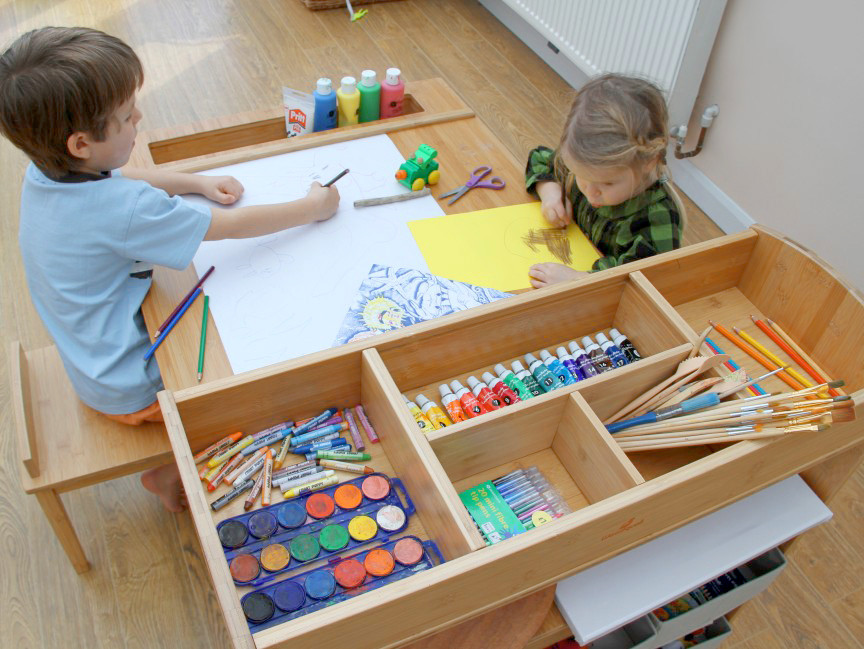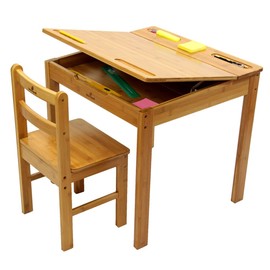Discovering that your kids take pleasure in arts and crafts can be a joy as well as presenting a great educational space for learning. When it comes to the messier activities like painting, it can be really great to encourage freedom and ease rather than concern over getting your favourite tablecloth mucky... After all, Picasso spent years trying to relearn what he had forgotten from his childhood, and teaching himself to paint with the openness of a child once more.
Instead of worrying about mess and clutter, why not give your kids a space that they can use as creatively and openly as they want to – our Children's Arts and Crafts Table is just the trick. With lots of storage and easy-to-wipe surfaces, your young artists can go as wild as they want to. Giving them a space in which to experiment freely will undoubtedly allow them to develop happily, whilst making beautiful artwork along the way.
Painting with kids
Finger Painting
It is known that tactile sense (i.e. touch) directly affect the development of the human nervous system, particularly the brain. Drawing - a huge experience in colour perception, fine tactile sense and a true pleasure. Than what can be better than a sensory art for kids' development and learning?
You can start finger-painting when the baby is already 5 months (it's useless to give a brush to a toddler younger than 3 years old). For the first time you can give one can of paint - for example, yellow. Next time you can introduce other colours. Later (after a few days or months) show the kid how to draw with fingers, palm, or how to mix colors.
Let your baby paint not specific items, he is too young for this, but they will transfer their feelings to the paper.
Body Tracing
Trace your child's body and let them paint inside it. They can be intersted in drawing internals (heart, veins, stomach, etc.) or painting beatiful dresses or faces, or making themselves a cartoon characters.
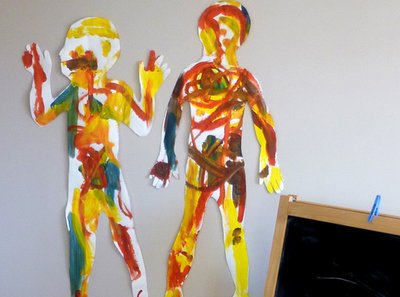
The child can as well trace the hand, or the foot, or any other part of the body and try to create a new character.
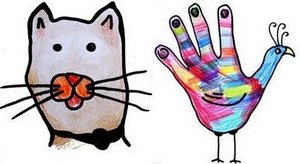
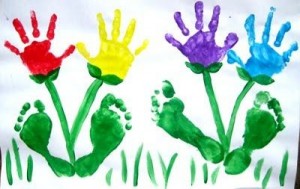
Look how many animals you and your child can do from finger prints. Such painting is one of the best ways to develop creative thinking.
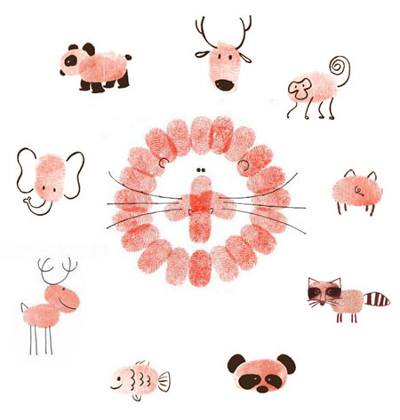
Pointillism
Pointillism is a technique of painting in which small, distinct dots of pure colour are applied in patterns to form an image. This technique was developed in 1886 by painter Georges Seurat.
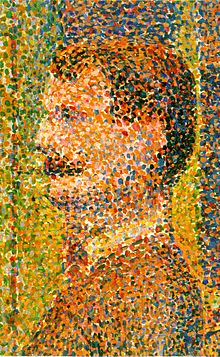 Georges Seurat. La Parade (detail)
Georges Seurat. La Parade (detail)
You can try this technique with your children too. Start with painting their name with dots, then try to paint simple shapes (circles, squares, triangles, etc.) Let your child feel the technique and then you can continue with painting flowers, animals, or even the whole pictures.
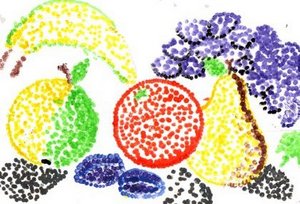
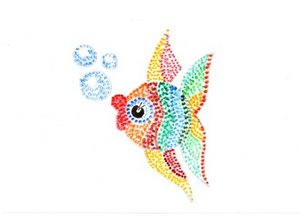
Modeling with kids
Modeling helps children discover basic forms and how how to make them. Moreover, it also develops hand-brain coordination, fine motor skills, agility, creativity and longer attention spans. It also can be a calming activity for your children.
Basic Shapes
For a start, teach children to form basic shapes: ball shape, an egg shape, a sausage, a snake, a pancake, a ribbon and a volcano.

Making an Owl
- 1. Make a ball;
- 2. Tap the ball to make flat circle;
- 3. Use a marker cap to make owl's feathers;
- 4. Fold the sides in to make wings;
- 5. Then fold the top down - to make a head and ears;
- 6. A marker cap will help you to make owl's eyes;
- 7. A butter knife will help you to make a beak;
Noodle Art
The simplest way to entertain your children is to use the items you already have in your house. We offer you to look into your kitchen and grab some noodles for he Noodle Art.
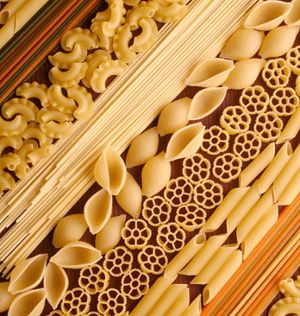
Preparing Colourful Noodles
- You will need:
- noodles of different shapes and sizes
- rubbing alcohol
- different coloured food dyes
- ziplock bags
- paper towel and plates

Place one or two handfuls of dry (uncooked) noodles into a plastic bag, add a few tablespoons of rubbing alcohol and 4-5 drops of food colouring. Tie the bag tightly and shake until all noodles are coloured. After that put the coloured noodles on a paper towel and wait till they thoroughly dry. Prepare noodles of different colours.
- Some tips:
- If you want to make orange colour, start with yellow food colouring, then add the red drop by drop. Doing it vice versa doesn’t seem to work well.
- To make green, again start with the yellow, then add the blue drop by drop.
- To make purple, start with the red and then add the blue drop by drop.
Making Pictures
- You will need:
- coloured noodles
- glue
- cardboard
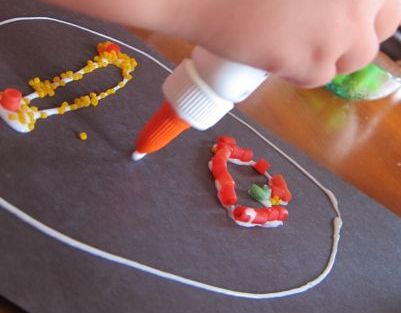
There are different ways of making pictures – children can put glue on each piece of macaroni and attach them to the paper, or you can ‘draw’ contours of the future picture with the glue and then attach macaronis.
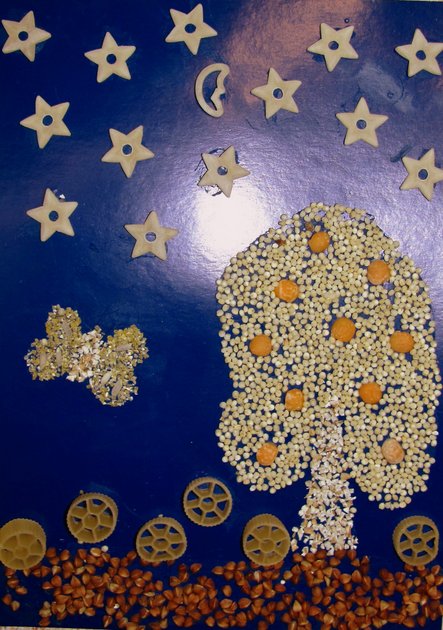
Gluing macaroni to the contours is a first step, but if you want to train children’s imagination more, draw a picture and suggest a child to add something to it, for example, a macaroni hair to a girl or a mane to a lion.
Making Bracelets & Necklaces
Take a string or yarn and cut the length of a necklace or a bracelet for your child. Put a sticky tape around the ends of the string, so it won’t fray. You can also tape one end of the yarn to the table to make the process easier.
When the macaronis are strung, tie the ends of the string so the child can wear it.
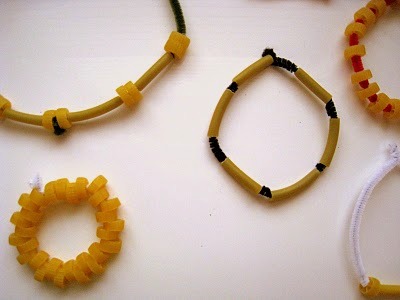
To be continued...
